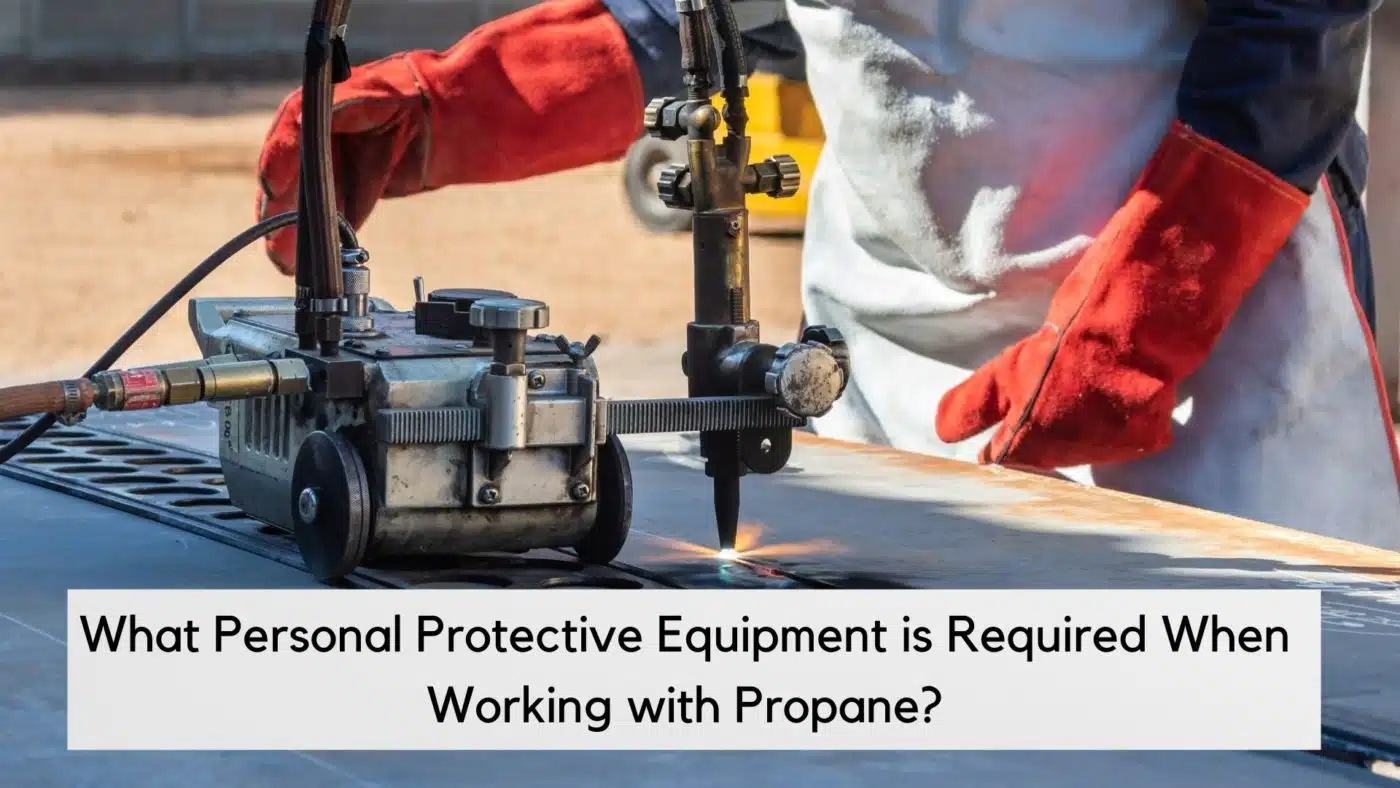No products in the cart.
First Aid/PPE
What Personal Protective Equipment is Required When Working with Propane?
Propane is a very widely used gas that finds its primary uses in heating and cooking. Whether in agriculture, industry, business, or the home, it is vital to ensure that you are safely protected when working with propane.
Common Interactions with Propane
The uses of propane are manifold. Chicken farmers use propane to keep chicks warm, and agricultural farmers use it for multiple purposes. Auto body repair shops use it to cure painted cars, and refrigerators use it as a refrigerant. Many boilers across the world utilize propane as an effective heating solution. And that isn’t even mentioning its domestic use in kitchens, caravans, and around the home. In short, the list of uses for propane is extensive.
This means that chances are you will find yourself working with propane at some point, and when that comes, it is valuable to know exactly how to protect yourself from the dangers it poses.
The Main Dangers of Propane
Flammability
As a highly flammable substance, propane, both in liquid and gas forms, is inherently a fire hazard. This means that it must be stored adequately to ensure that propane stays inside its storage cylinder without seeping into the surrounding environment.
Leaks
In its natural form, propane can be an incredibly dangerous substance. This is primarily due to the gas being naturally odorless, allowing it to quickly run under the radar of those even in the epicenter of a propane leak. And, of course, being in the presence of a leak is not only a fire hazard but a danger to your health.
Fortunately for us, propane distributors add an odorant that provides propane with its distinctive smell, minimizing the possibility of a propane leak going unnoticed.
Explosions
Contrary to the image pushed in many mass media, propane cylinder explosions are exceptionally rare. This is due to the fact that propane is required to make up between 2.15% and 9.6% of the total air mixture in any given area to become explosive. This means that propane explosions technically can occur if enough propane were collected in a confined space (outside of the canister). Still, the vast majority of damage to a canister will result in a leak, not an explosion.
Cold Burns
Liquid propane is incredibly cold. This means that direct exposure to it could cause severe cold burns on exposed skin. Fortunately, this danger can easily be combatted by the effective use of personal protective equipment.
How To Safely Work With Propane?
By understanding the critical dangers of propane, we are made aware of some of the key preventative measures to consider when working with the substance:
Appreciate it is Flammable
As propane is flammable, the number one rule when working with it is to keep it away from heat, sparks, open flames, and unapproved electrical equipment. By ensuring this alone, you are significantly reducing the risk of catastrophe.
Ensure There is Good Ventilation
When in gaseous form, propane can displace oxygen at high concentrations. This means that it not only poses a fire hazard in enclosed spaces, but it can also pose a direct threat to your breathing—resulting in loss of consciousness if gone unchecked.
This means that propane should only ever be worked within well-ventilated areas. Furthermore, you should never enter confined spaces known to contain propane leaks without the correct protective equipment.
Store it Safely
As a sensitive substance, propane is required to be stored safely. This generally sees propane stored outside in a cool, well ventilated, and isolated location away from sparks, excessive temperatures, open flames, and living spaces.
However, before storing propane outside, you must first check that the container/cylinder stored within is wholly weatherproof from wind, rain, temperature, and sunlight.
It is also essential that propane is stored away from smoking areas due to the issue of flammability. Thus, “No Smoking” signs are a must.
What is PPE Required?
Beyond accident prevention, the personal protective equipment (PPE) will ensure that any propane work has an extra layer of protection. That said, if your interaction with propane is anything beyond plugging in and switching on a propane supply, you must undoubtedly consider using PPE. Always remember, it’s better safe than sorry.
So, what PPE should you be considering when working with propane? These depend on your use case and whether the propane you are working with is liquid or gaseous. Let’s dive into the lot.
Gas and Liquid: Safety Glasses and Face Shield
Wearing safety glasses or a face shield will minimize potential injury to the eyes and face, which the pressurized gas and liquid propane can cause.
These are a no-brainer and should be worn every time you interact with propane to protect your face from any potential damage.
Gas and Liquid: Static Dissipative and Fire-Resistant Clothing
Due to its inherent flammability, it is wise to wear static dissipative and fire-resistant clothing and shoes when working with large propane quantities. This is important for two reasons. Firstly, the static dissipative materials will reduce the risk of static-induced ignition of the propane. And secondly, the fire-resistant materials will help to minimize personal harm in the event of ignition.
Liquid: Insulating gloves
Due to liquid propane being cryogenic, it is essential to wear insulating gloves in circumstances where contact with liquid propane may occur. While the eventuality of contact may feel incredibly unlikely, it is still good industrial practice to equip yourself with the correct protective equipment each time in the unlikely instance of a disaster.
Liquid: Impervious Garments
Again, as liquid propane is cryogenic, it is paramount that it does not contact your skin directly. To ensure your safety, it is valuable to use a waterproof face shield and an impervious apron or other garments alongside your insulated gloves. These will provide the most protection against potential accidents with the cryogenic liquid, which would if unprotected, could result in very severe cold burns.
Gas: Self Contained Breathing Apparatus
As propane is a gas that can displace oxygen at high enough concentrations, you should, as stated above, work with gaseous propane in well-ventilated environments or outdoors.
Suppose you are entering an area with an extremely high concentration of propane or a suspected propane leak. In that case, you should consider using a NIOSH-approved self-contained breathing apparatus (SCBA), respirator, or equivalent breathing solution.
However, when using breathing solutions, it is also paramount that you consider the flammability and explosion risks of bringing pressurized oxygen into an area with a high concentration of flammable propane gas. This risk should be taken very seriously.
Ensure You Are Safe
Now that we have considered the key dangers, preventative measures, and personal protective equipment that come with propane, you should have a firm understanding of the basic principles of working with propane as both a liquid and gas.
Remember, before interacting with any hazardous material, you should first equip yourself with the knowledge of how to work with it safely. You should procure the necessary safety gear to minimize harm in the event of an accident.
At CanGardCare, we take PPE incredibly seriously and are a leading provider of health and safety supplies in Canada. For a detailed overview of all the Personal Protective Equipment available from us, please visit CanGardCare.
Stay safe!

